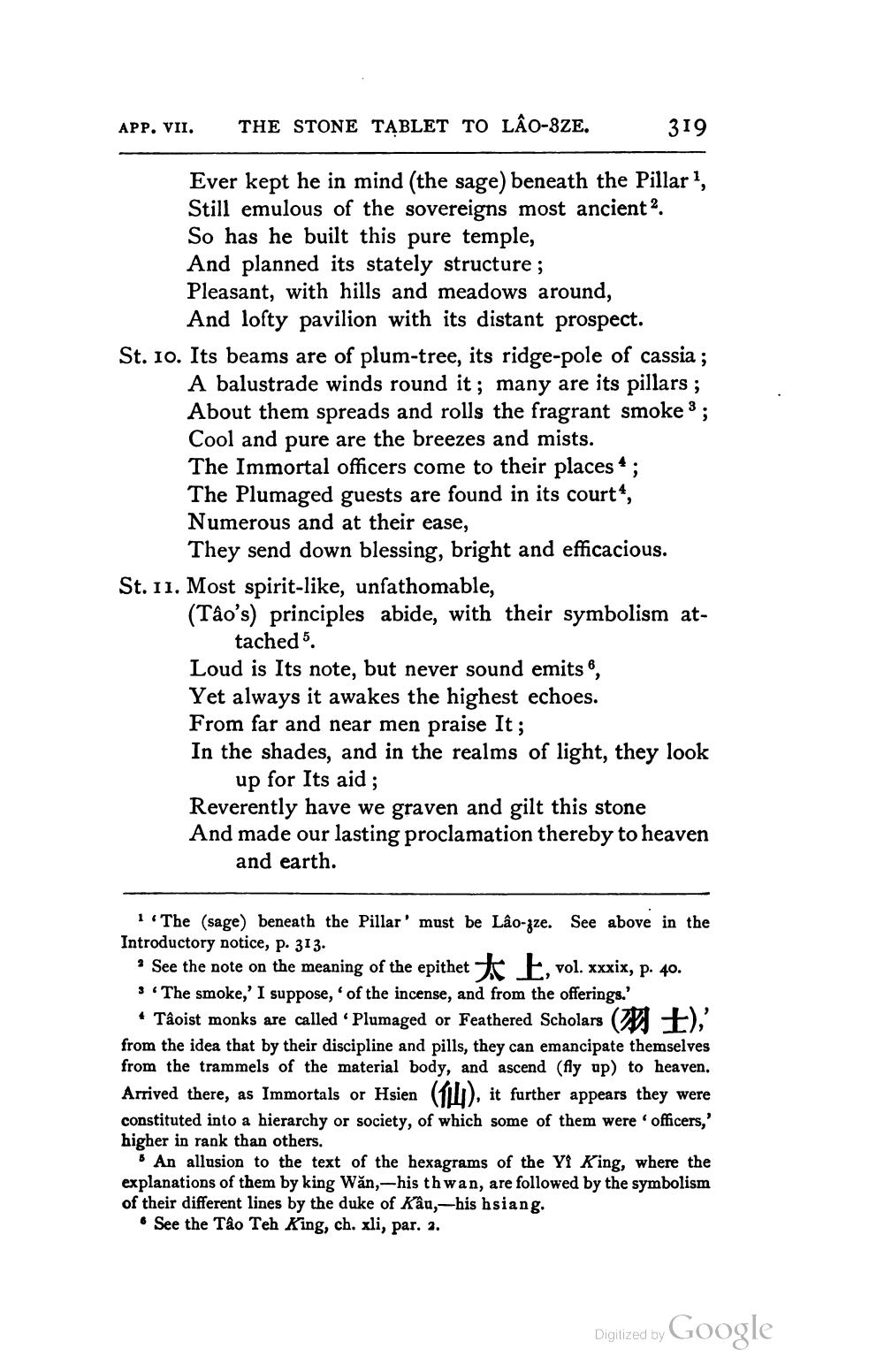________________
APP. VII.
THE STONE TABLET TO LÃO-SZE.
319
Ever kept he in mind (the sage) beneath the Pillar, Still emulous of the sovereigns most ancient. So has he built this pure temple, And planned its stately structure; Pleasant, with hills and meadows around,
And lofty pavilion with its distant prospect. St. 10. Its beams are of plum-tree, its ridge-pole of cassia ;
A balustrade winds round it; many are its pillars; About them spreads and rolls the fragrant smoke 3 ; Cool and pure are the breezes and mists. The Immortal officers come to their places *; The Plumaged guests are found in its court“, Numerous and at their ease,
They send down blessing, bright and efficacious. St. 11. Most spirit-like, unfathomable,
(Tâo's) principles abide, with their symbolism at
tached 5. Loud is Its note, but never sound emits, Yet always it awakes the highest echoes. From far and near men praise It; In the shades, and in the realms of light, they look
up for Its aid; Reverently have we graven and gilt this stone And made our lasting proclamation thereby to heaven
and earth.
1. The (sage) beneath the Pillar' must be Lâo-zze. See above in the Introductory notice, p. 313.
See the note on the meaning of the epithet * E, vol. xxxix, p. 40. 3 "The smoke,' I suppose, of the incense, and from the offerings.'
* Taoist monks are called 'Plumaged or Feathered Scholars ( +),' from the idea that by their discipline and pills, they can emancipate themselves from the trammels of the material body, and ascend (fly up) to heaven. Arrived there, as Immortals or Hsien (), it further appears they were constituted into a hierarchy or society, of which some of them were officers,' higher in rank than others.
5 An allusion to the text of the hexagrams of the Yi King, where the explanations of them by king Wăn,-his thwan, are followed by the symbolism of their different lines by the duke of Kâu,-his hsiang.
• See the Tao Teh King, ch. xli, par. 2.
Digitized by Google




